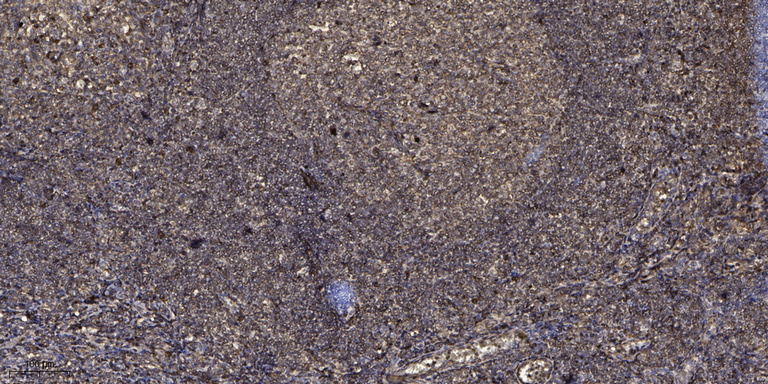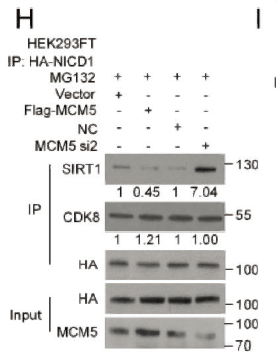SIRT1 (PT0158R) PT® Rabbit mAb
- Catalog No.:YM8094
- Applications:WB;IHC;IF;IP;ELISA
- Reactivity:Human; Rat;
- Target:
- SIRT1
- Fields:
- >>Nicotinate and nicotinamide metabolism;>>Metabolic pathways;>>FoxO signaling pathway;>>AMPK signaling pathway;>>Longevity regulating pathway;>>Longevity regulating pathway - multiple species;>>Cellular senescence;>>Glucagon signaling pathway;>>Alcoholic liver disease;>>Amphetamine addiction;>>MicroRNAs in cancer
- Gene Name:
- SIRT1
- Protein Name:
- NAD-dependent protein deacetylase sirtuin-1
- Human Gene Id:
- 23411
- Human Swiss Prot No:
- Q96EB6
- Mouse Gene Id:
- 93759
- Mouse Swiss Prot No:
- Q923E4
- Specificity:
- endogenous
- Formulation:
- PBS, 50% glycerol, 0.05% Proclin 300, 0.05%BSA
- Source:
- Monoclonal, rabbit, IgG, Kappa
- Dilution:
- IHC 1:100-200,WB 1:1000-5000,IF 1:200-1000,ELISA 1:5000-20000,IP 1:50-200
- Purification:
- Protein A
- Storage Stability:
- -15°C to -25°C/1 year(Do not lower than -25°C)
- Other Name:
- SIRT1;SIR2L1;NAD-dependent protein deacetylase sirtuin-1;hSIRT1;Regulatory protein SIR2 homolog 1;SIR2-like protein 1;hSIR2
- Molecular Weight(Da):
- 81kD
- Observed Band(KD):
- 130kD
- Background:
- This gene encodes a member of the sirtuin family of proteins, homologs to the yeast Sir2 protein. Members of the sirtuin family are characterized by a sirtuin core domain and grouped into four classes. The functions of human sirtuins have not yet been determined; however, yeast sirtuin proteins are known to regulate epigenetic gene silencing and suppress recombination of rDNA. Studies suggest that the human sirtuins may function as intracellular regulatory proteins with mono-ADP-ribosyltransferase activity. The protein encoded by this gene is included in class I of the sirtuin family. Alternative splicing results in multiple transcript variants. [provided by RefSeq, Dec 2008],
- Function:
- catalytic activity:NAD(+) + an acetylprotein = nicotinamide + O-acetyl-ADP-ribose + a protein.,cofactor:Binds 1 zinc ion per subunit.,enzyme regulation:Inhibited by nicotinamide. Activated by resveratrol (3,5,4'-trihydroxy-trans-stilbene), butein (3,4,2',4'-tetrahydroxychalcone), piceatannol (3,5,3',4'-tetrahydroxy-trans-stilbene), Isoliquiritigenin (4,2',4'-trihydroxychalcone), fisetin (3,7,3',4'-tetrahydroxyflavone) and quercetin (3,5,7,3',4'-pentahydroxyflavone). RPS19BP1/AROS acts as a positive regulator of deacetylation activity.,function:NAD-dependent deacetylase, which regulates processes such as apoptosis and muscle differentiation by deacetylating key proteins. Deacetylates 'Lys-382' of p53/TP53 and impairs its ability to induce proapoptotic program and modulate cell senescence. Deacetylates TAF1B and thereby represses rDNA transcription by the RNA polymerase I. Involved in HES1
- Subcellular Location:
- Nuclear
- Expression:
- Widely expressed.
- June 19-2018
- WESTERN IMMUNOBLOTTING PROTOCOL
- June 19-2018
- IMMUNOHISTOCHEMISTRY-PARAFFIN PROTOCOL
- June 19-2018
- IMMUNOFLUORESCENCE PROTOCOL
- September 08-2020
- FLOW-CYTOMEYRT-PROTOCOL
- May 20-2022
- Cell-Based ELISA│解您多样本WB检测之困扰
- July 13-2018
- CELL-BASED-ELISA-PROTOCOL-FOR-ACETYL-PROTEIN
- July 13-2018
- CELL-BASED-ELISA-PROTOCOL-FOR-PHOSPHO-PROTEIN
- July 13-2018
- Antibody-FAQs
- Products Images
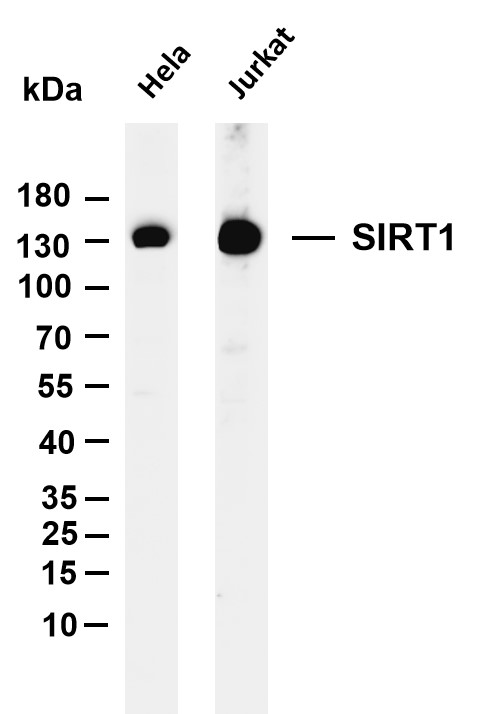
- Various whole cell lysates were separated by 4-20% SDS-PAGE, and the membrane was blotted with anti-SIRT1 (PT0158R) antibody. The HRP-conjugated Goat anti-Rabbit IgG(H + L) antibody was used to detect the antibody. Lane 1: Hela Lane 2: Jurkat Predicted band size: 81kDa Observed band size: 130kDa
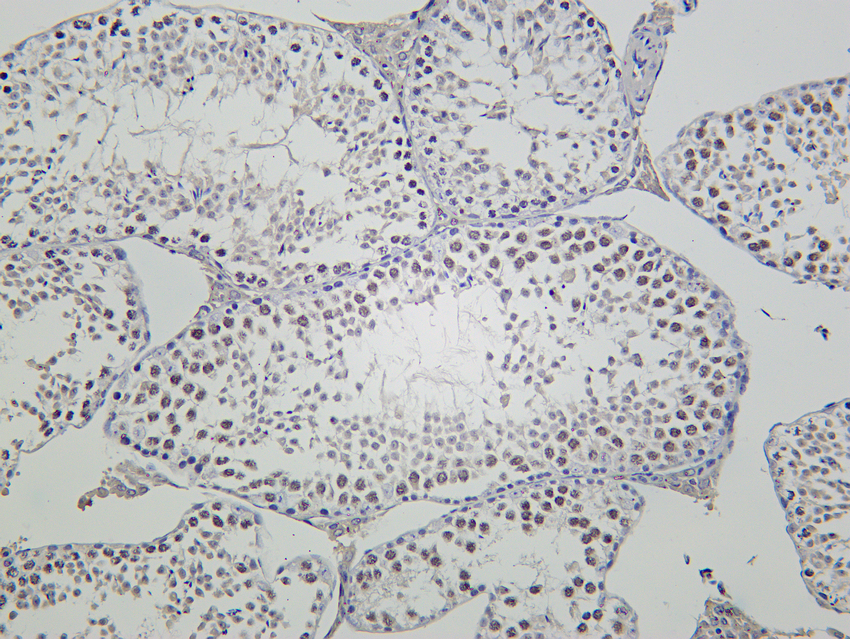
- Mouse testis was stained with Anti-SIRT1 (PT0158R) rabbit antibody
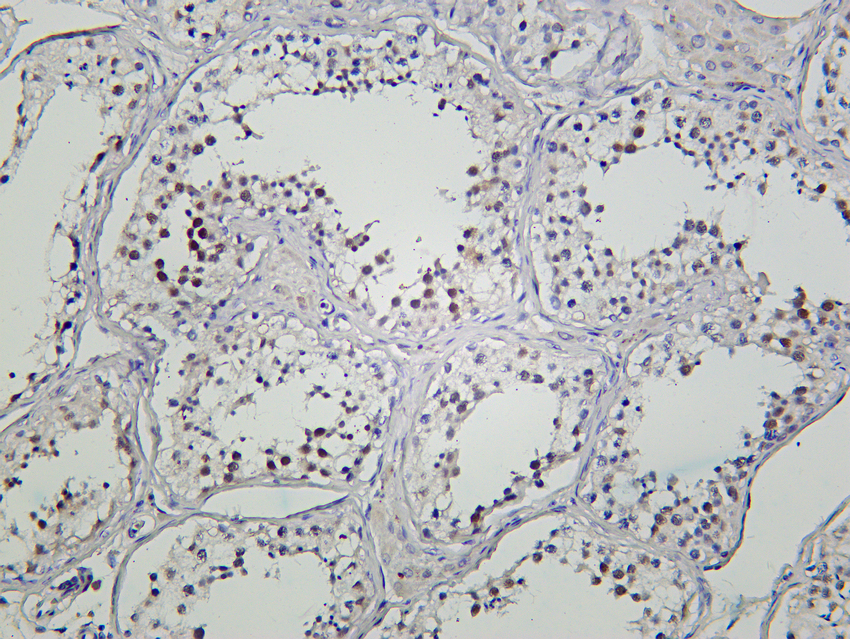
- Human testis was stained with Anti-SIRT1 (PT0158R) rabbit antibody


